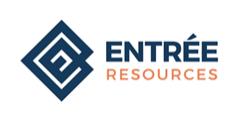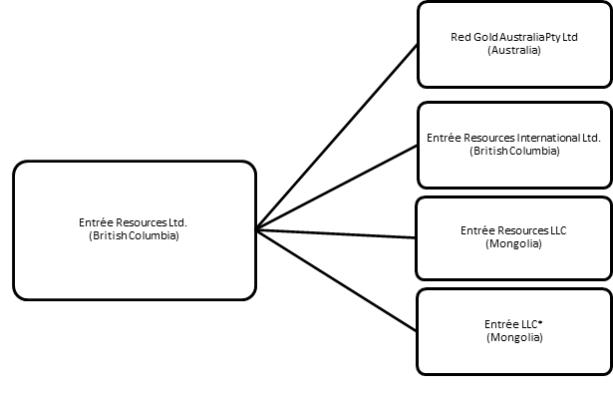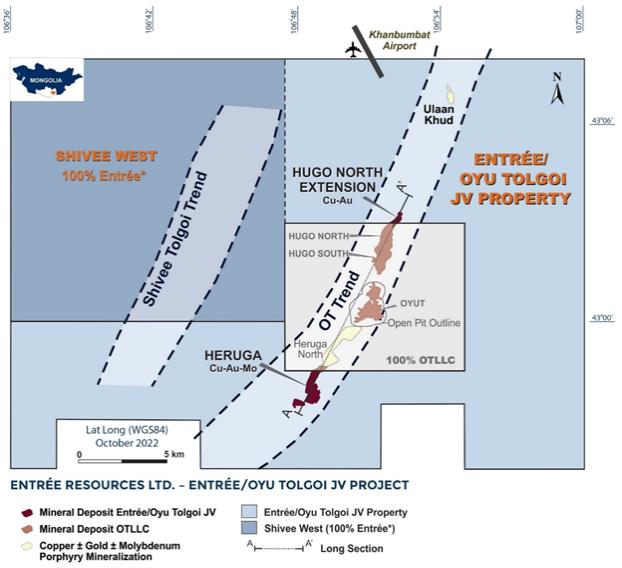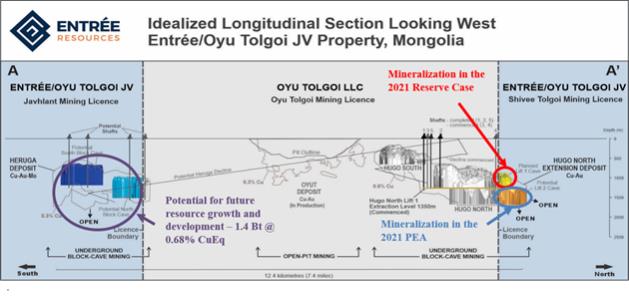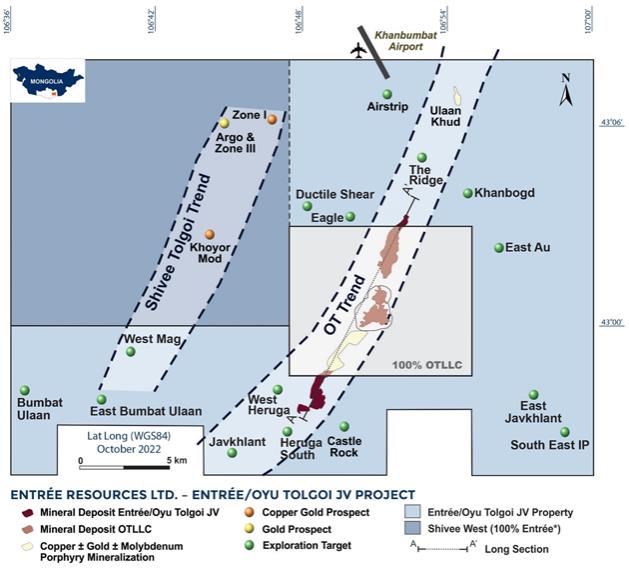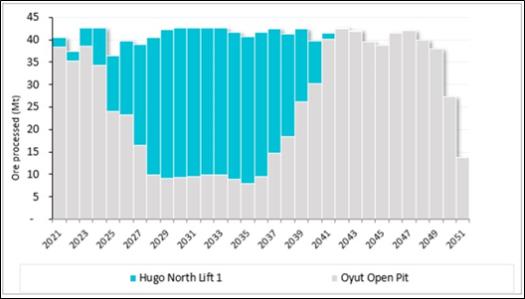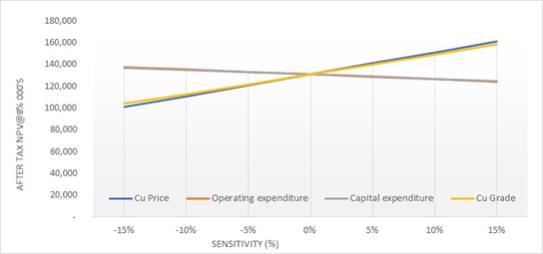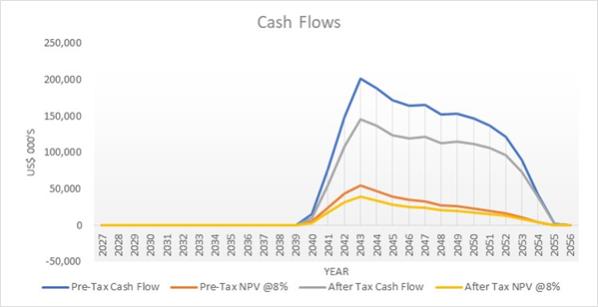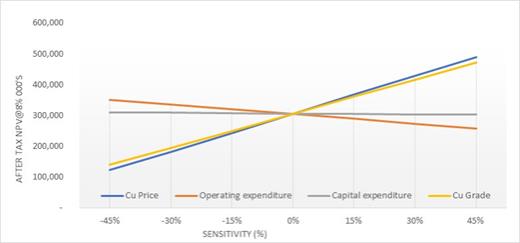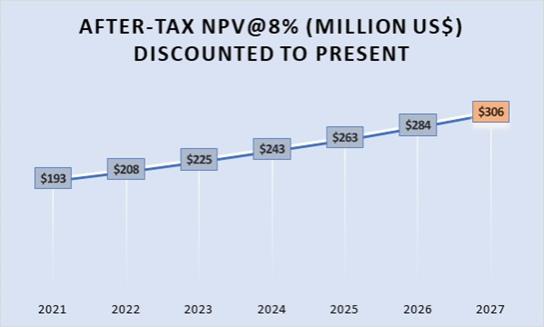Free signup for more
- Track your favorite companies
- Receive email alerts for new filings
- Personalized dashboard of news and more
- Access all data and search results
Content analysis
?| Positive | ||
| Negative | ||
| Uncertain | ||
| Constraining | ||
| Legalese | ||
| Litigous | ||
| Readability |
H.S. freshman Avg
|
|
New words:
AA, AAS, abeyance, abide, abolished, aborted, abrupt, absolute, absorption, abstain, abutment, accept, acceptable, acceptance, accepted, accessed, accommodate, accommodation, accompany, accrual, accrued, accruing, accuracy, acid, active, activity, added, addressed, addressing, Adelaide, adequacy, adjacent, adjunct, adjusted, advance, advanced, advancement, advancing, adverse, adversely, advisory, AE, affiliate, aforementioned, Africa, Ag, agenda, aggressive, agree, agreed, ahead, aim, aimag, aimed, air, airport, Airstrip, AISC, Ajo, Alagbayan, Allan, allocate, allocated, ALS, alteration, altered, alternative, ambit, amenable, America, amortization, amortized, analytical, analyzed, Anglo, announced, announcement, announcing, annulled, apex, apparent, append, appended, apportioned, approach, approximate, approximately, AQM, aquifer, arbitrary, arbitration, arbitrator, archaeology, Argonaut, arid, arise, arising, Arizona, armed, arrived, arsenic, Article, articulated, ASIC, assay, assayed, assaying, asset, atomic, attack, attended, attention, attract, attractive, attributable, atypical, Au, augite, August, AuRico, Australia, autumn, Avant, avenue, avoid, avoided, aware, azimuth, Bachelor, back, bagged, bagging, balance, balanced, ball, bargaining, barge, barren, basalt, basecase, baseline, basin, batch, BBA, BCBCA, BDT, began, begin, beginning, behaviour, bell, beneath, beneficial, beneficially, billion, binding, biodiversity, biotite, blank, blasted, blasting, blend, blended, block, Blue, body, bolded, bolting, bond, Bondar, book, boom, border, bore, borne, Bornite, bottom, boundary, boxhole, Braemar, Brazil, breach, bring, brittle, broad, broadly, Broken, brought, building, Bulagbayan, bulk, Bumbat, bureaucratic, Burrard, ca, Cabinet, cable, calculated, calculating, calculation, calendar, calibration, call, called, calliper, camp, cancel, cancellation, cancelled, cancelling, Candente, candidate, capable, capacity, capture, carapace, carbon, carbonate, Cardiff, care, career, careful, carefully, carrier, Castle, categorized, cave, caveability, caving, cease, ceased, Cell, central, centre, centred, centroid, certainty, certified, chain, Chairman, Chairperson, chalcopyrite, challenge, challenged, challenging, channel, character, chart, Chemex, China, Chinese, chip, chosen, chute, CIBC, circuit, circular, circulation, civil, claim, clarify, clarity, classified, clause, cleaner, cleaning, clear, Clegg, closure, cold, collaborate, collaboration, collar, collared, collate, collect, collected, collection, collectively, collector, College, column, Combating, commence, commenced, commencement, commencing, commerce, commercial, commercially, comminution, committed, commonly, compelling, compensatory, Competency, complicated, component, composed, computation, computer, computerized, Computershare, concealed, concentrate, concentrator, concept, conclusion, concurrent, concurrently, conducive, conferencing, confidence, confidential, configuration, confirm, confirmation, confirmatory, confirmed, confiscate, confiscation, conflict, conform, conformity, conjunction, consensual, conservation, conservatism, conservatively, considerable, consideration, constant, constrain, constrained, constraining, consumption, consumptive, contaminant, contemporary, contested, context, continental, contingency, contingent, contract, contractor, conventional, conversion, conveyed, conveying, conveyor, Conway, COO, cool, cooperation, coordination, Cordillera, core, correlated, corridor, corrupt, corruption, costly, count, court, courtesy, CPA, create, created, credited, criminal, critical, crossing, crushed, crushing, Cu, cubic, CuEq, cultural, culture, cumulative, cure, curtail, curtailed, curtailment, Curtin, CUSIP, custom, customary, cut, cutting, cybersecurity, cycle, dam, damage, database, dataset, daughter, DC, DCF, deadlock, deal, debt, decision, declare, declared, declaring, decline, decommissioning, decrease, Decree, deem, deemed, deep, deeper, default, defend, deferred, deformation, delay, delayed, delaying, delineating, delisted, delisting, deliverable, Deloitte, demonstrated, density, Department, departure, depend, dependent, depending, depletion, deposit, deposited, deposition, depressed, deprive, deprived, depth, derivative, derive, derived, destabilizing, deter, deterring, detriment, deviation, device, devise, Devonian, dewatering, diameter, diamond, dictate, differential, difficult, digestion, digital, diorite, dip, dipping, direct, directed, directing, direction, disagreement, discontinuation, discount, discounted, discounting, discourage, discovered, discretion, discrimination, dispatch, displaced, displayed, dispute, disrupt, disrupted, disruption, disseminated, distance, distribution, district, diverse, diversified, diversion, diverted, divided, dividend, Division, doctrine, Dodge, domain, domicile, dominant, dominated, downhole, downstream, downturn, Dr, draft, drafting, dramatic, drawbell, drawcone, drawpoint, drill, drilled, drilling, drop, Ductile, due, Dummett, duration, duty, dyke, earlier, earn, earned, easing, east, eastern, Eastman, EBRD, economy, edge, education, efficient, effort, EGI, el, Eldorado, electrode, element, Elevated, elevation, elongated, embankment, emission, employed, employee, EMS, enable, enacted, enacting, Enargite, encountered, endeavor, endorsed, energy, Engineer, engineering, enhance, enhancement, enhancing, entity, enumerated, envisaged, envisioned, EPCM, epithermal, equal, equalled, equally, Equator, equivalent, ERLFF, erosion, ESA, escalate, escalation, escrowed, ESG, ESIA, espoused, essentially, ETG, EU, Eur, European, eventual, eventually, evolve, evolving, EVP, exacerbate, exact, examined, excavation, exceed, exceeded, Excel, excessive, excluded, excluding, exclusion, exclusive, exclusively, exhaust, expanded, expend, expended, expending, expenditure, expense, expensive, experience, experienced, expertise, expire, expiring, explanation, exploit, exploitable, exploitation, exploiting, explosive, export, exported, exporting, expose, exposed, exposure, expressly, expropriate, expropriated, expropriation, extracted, extraction, extraordinary, extremely, Facilitate, facility, facing, Facsimile, fail, failing, fair, faith, fall, familiar, farm, Fasken, fault, faulting, favour, favourable, favourably, Fax, fee, feed, fell, felsic, fenced, fewer, fidelity, field, figure, filtration, finder, Finning, fire, fired, firing, fit, fixed, flagged, fleet, flexibility, Flexit, flight, floating, flocculant, flood, Floor, flotation, fluctuated, fluorine, focused, focussed, folding, footprint, force, forced, forcing, forecast, foreseeable, Forex, forfeit, forma, formal, formally, formula, found, fourth, fracturing, Fraser, fraud, free, freeboard, Freeport, freight, frequency, frequently, fresh, fringe, Frontera, frother, fuel, fulfill, fulfilling, fully, function, furnace, fusion, gain, Galiano, gallery, gas, Gashuunsukhait, gave, Generale, gently, Geo, Geocad, geochemical, geographical, geological, geologically, geologist, geology, geometallurgical, geometry, geophysical, Giralia, GISTM, Gobi, Goldcorp, good, Governor, GPS, grab, gradual, graduate, graduated, gram, granite, granodiorite, graph, gravity, Green, greenhouse, grid, grind, grindability, grinding, group, guidance, guideline, Gunii, Gurvansayhan, gyro, half, halved, hampered, Hancock, handle, handling, hard, harm, harmed, haul, haulage, HCU, headframe, hear, hearing, heating, heavily, Heavy, height, heightened, heritage, high, highest, highlighted, highly, hindered, history, HNE, hoisting, holder, hole, homoclinal, honestly, honour, Hooloi, Horizon, host, hosted, hot, hour, HQ, Hudbay, hydrogeological, ICMM, ideal, IFC, iii, illustrated, illustrative, imagery, IMAR, immersion, immunity, impair, impaired, IMPIC, impossible, improper, improve, improved, improvement, improving, impugned, inaccurate, incentive, inception, inclement, inclination, incline, inclusion, inclusive, income, incompatible, inconsistent, incorrect, increase, increased, increasing, increasingly, incremental, incurrence, indemnify, indemnity, indeterminate, index, indirect, individual, individually, Indonesia, induced, inequality, inflation, inflationary, influence, Infosuite, Ing, initial, initially, initiated, initiation, input, instability, installation, intake, integral, integrated, integrity, intense, intensely, intent, intention, interfere, intermediate, interpolated, interpolation, introduce, introduced, introduction, intrude, intruded, intrusion, intrusive, invalidate, invalidation, invasion, inverse, investigate, investigated, investigation, investigative, investor, invoke, invoking, involve, involved, involving, ion, IP, iron, IRR, irregular, irrespective, ISO, issuable, iv, Ivanhoe, January, Javkhlant, joined, joining, jointly, JSC, judgment, judicial, July, June, justified, JVA, Khanbogd, Khud, Khudag, Khural, kilovolt, kind, km, knowledge, Kodak, KOH, kriging, kV, labor, laboratory, lack, Lambayeque, land, large, larger, largest, Laundering, layout, lb, lbs, lead, leading, lease, leaving, LECO, led, left, legacy, legitimate, lender, length, lengthy, LERO, lesser, letter, levied, LHD, liaison, liberation, License, lie, light, likelihood, Likewise, lime, line, lithological, lithology, LLB, Lo, load, loaded, loading, loan, lock, locked, Lodestone, logged, logging, logistical, LOM, London, long, longer, longitudinal, lose, low, lower, lube, Luna, Mag, magnetic, magnetite, magnetometer, magnetotelluric, magnify, main, majeure, manner, manual, mapping, marketplace, Mason, massive, matched, matter, maximise, maximizing, maximum, MBA, McLeod, McMoRan, meaningful, media, MEGDT, membership, mentioned, mercury, merger, merit, mesh, met, metal, method, methodology, metre, milestone, millimetre, million, minable, Minenet, mineralisation, mineralogical, minimal, minimise, minimize, minimizing, Minister, Ministry, MinnovEX, mitigate, mitigated, mitigation, ML, mm, MNT, Mo, mobile, mobilize, mobilizing, model, modeling, modelled, modelling, moderate, moderately, modification, modified, modify, molybdenite, Mongolian, month, monthly, monzodiorite, MoU, Mountain, move, moved, movement, MRPAM, Mt, mucking, municipality, mutual, mutually, MW, nameplate, necessarily, negative, negatively, negotiate, negotiation, neighbouring, net, network, Newcrest, newly, Nikon, Nil, NM, NN, noise, nonrecourse, Norte, northeast, northeasterly, northern, northernmost, northward, note, noted, notice, notification, notify, Notwithstanding, November, NPTG, NPV, NQ, NSR, nugget, NW, observe, occupation, occupational, occurrence, offer, offered, offering, official, oil, Olary, open, opportunity, opposition, optical, optimization, optimize, optimizing, Oracle, order, ordinary, orebody, organizational, oriented, original, originally, OTC, OTCQB, OTTR, outbreak, outcome, outcropping, outlier, outline, outlined, outward, overcome, overhead, overlap, overlying, overprinted, overview, owing, owner, ownership, Oyut, oz, Pacific, package, Palaeozoic, pan, paper, parallel, parent, Parliament, partial, partly, partner, partnership, party, passed, passing, passive, pathway, Paula, pay, payable, payback, paying, PCD, peak, penalty, pending, people, percent, percentage, perimeter, permanent, persist, personnel, perspective, Perth, Peru, Peruvian, PFIC, phase, Phone, physical, pillar, Pink, pipeline, pit, placement, plasma, plc, plenary, plunge, point, polarization, policy, pollution, polycrystalline, pond, population, porphyry, port, portal, portfolio, portion, pound, Powerex, ppm, PQ, practise, pre, preassembly, precaution, preclude, precluded, predecessor, predict, predicted, predicting, predictor, predominantly, prejudicial, preliminary, premium, preparatory, presence, preserve, pressure, prevailing, PriceWaterhouse, primarily, prime, principle, prioritized, priority, pro, problematic, procedure, proceeding, procure, procurement, produce, produced, professor, profile, profit, profitable, program, progressing, progression, progressive, prolonged, promissory, promote, prompt, propagation, properly, proportion, proportionate, proportioned, prosecute, prospect, prospecting, prospective, protracted, provincial, proximity, PSFA, published, pulverized, pulverizing, pump, pumping, pursuit, put, pyrite, QEF, QP, QPs, quality, quantifiable, quantify, quantity, Quantum, quarantine, quarter, quartz, Quebrada, quotation, railway, rainfall, ramp, Ranger, rank, rata, ratio, raw, RC, reach, reached, reaching, real, realising, receipt, recent, recently, recession, recessionary, reclaim, recognize, recognized, recommenced, recommend, recommended, reconcile, reconciliation, reconnaissance, Reconstruction, recourse, recover, recoverability, recovered, recovering, recruit, recruitment, recurrence, recycle, red, redeemed, redemption, redesign, reduce, reduced, reducing, reduction, refrain, refund, refundable, refunded, refusal, region, regional, registrar, regular, regularly, rehabilitation, reimbursement, reinstated, rejection, release, relied, rely, remain, remained, remaining, remobilization, remote, remove, removed, remuneration, render, rendered, rendering, renegotiate, renew, renewal, renewed, rent, repaid, Repatriation, repayment, reproduce, reputation, reputational, requisite, requisition, rescind, rescission, research, resetting, residence, resign, resignation, resolve, resolving, resort, restated, restoration, restore, restricted, restricting, restriction, restructured, restructuring, resumed, resurgence, retirement, retraction, retroactive, return, returned, reuse, revenue, reverse, reversed, revisited, reviving, revocation, revoke, revoked, revoking, Ridge, Ridgeline, rig, rim, river, road, rock, role, rope, Rose, Rothschild, rougher, roughing, rounded, rounding, route, routine, routinely, routing, Royal, royalty, RQD, run, Russia, SABC, safe, safeguarded, safeguarding, SAG, sake, sale, sample, sampled, sampling, sand, Sandstorm, satellite, satisfaction, satisfactory, scale, Science, scope, script, sealed, season, seasonal, seasonally, secondary, Secretarial, Secretary, sector, sedar, sediment, sedimentary, Select, selected, selectivity, sell, sending, senior, sensitive, sensitivity, sentiment, September, serve, served, session, settlement, SFH, SGS, shaft, shallow, shape, Shear, shell, shift, shop, short, shotcrete, show, showed, shown, shutdown, SIA, side, siltstone, Silurian, similarly, Simon, simple, simpler, simply, simultaneously, single, sinking, situ, situated, situation, slowdown, small, smaller, smelter, Societe, Society, soft, software, soil, solution, Sonal, Sonoran, soum, sound, south, southeast, southerly, southern, southernmost, southwest, sovereign, spaced, spacing, spare, spatial, speak, spectrometry, spectroscopy, spend, spending, spent, Sperry, splay, spread, spreadsheet, spring, square, stability, stabilization, stabilized, stable, stage, stake, standalone, station, statutory, step, sterilized, stockworked, storage, store, stored, storm, straight, strata, strategic, strategy, stream, streaming, stricter, strike, stringent, strong, structural, structure, structured, structuring, subdivided, submission, submittal, subpart, subscription, subsequent, subsequently, subset, subsidence, substantial, substantially, substation, subsurface, subtracting, successfully, successor, suffer, suffering, suggested, suing, suitable, sulphur, sum, summary, summation, Sun, Superior, supernatant, supplied, supply, support, supporting, Sur, surface, surrender, surtax, survey, surveyed, surveying, survive, suspend, suspending, suspension, swap, syenite, symbol, systematic, tag, target, targeting, Tavan, taxable, taxpayer, teaching, team, TEC, technology, Teck, telecommunication, template, temporarily, temporary, tennantite, tenure, Teresa, terminated, terminating, termination, Terrane, territory, terrorism, testwork, theft, theodolite, thereon, therewith, thickened, thickening, thin, threshold, Tianjin, Tier, timeline, Timpete, tonne, Tonogold, top, topography, topsoil, Tourism, township, toxic, tpd, TPOH, trace, track, traditionally, transaction, transected, transfer, transferable, transferred, transferring, translate, Transmission, travel, Treasurer, treasury, treat, treated, treating, treatment, trenching, trend, Tribunal, truck, TSF, Tsogttsetsii, TSX, Tunnelling, turn, twin, type, typically, UK, Ukhaa, Ukraine, Ulaan, Ulaanbaatar, ultimate, ultimately, Umnugobi, unanimously, unattended, unavailable, uncapped, uncertain, unchanged, Undai, underexplored, undergoing, understood, undertaken, undertook, underway, Unearned, uneconomic, uneconomical, unexpected, unfair, unforeseeable, unified, unissued, University, unknown, unlimited, unnecessary, unplanned, unprecedented, unpredictable, unprofitable, unrecognized, unrelated, unrest, unrestricted, Unsampled, upfront, upper, upward, usage, utilize, utilized, vaccination, valid, validation, validity, valuation, vandalism, vapour, variance, variant, variation, variety, variogram, Variographic, vary, varying, VAT, vendor, ventilation, Verde, verification, version, vertical, vested, VI, viability, viable, vibration, vice, video, view, VII, village, visited, vitiated, volcanic, volcaniclastic, volume, voluntarily, VWAP, waiting, warehousing, warrant, warranted, waste, weak, weather, weekly, weight, weighted, weighting, welfare, western, Wheaton, whichever, Whistleblower, wholly, wide, widely, width, withdraw, withdrawing, withdrew, withholding, workforce, world, worldwide, writing, XXK, York, Yukon
Removed:
accumulated, asExhibit, attestation, authorization, blackout, BTR, chapter, compromise, detail, detect, detection, deteriorate, disposing, duly, electronically, Employer, furnish, GAAP, hereto, implicitly, inadequate, inAudit, Industrial, Instruction, performed, pertain, prescribed, prevention, print, promptly, registrant, requested, shorter, Sponsoring, substantively, thede, Treadway, undersigned, waiver, zip
Filing tables
Filing exhibits
ERLFF similar filings
Filing view
External links
